

PBM-3 Mariner
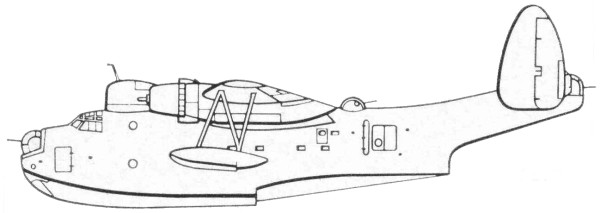
The Martin PBM series began with their design of Model 162 in 1937. In June of that year the Navy placed an order for one prototype designated XPBM-1, followed in December with another for twenty PBM-1's. The XPBM flew for the first time on February 18, 1939. The first PBM-1 which was similar to the prototype flew on September 1, 1940. The main difference from the prototype was the addition of a dihedral on the horizontal tail surfaces. The PBM-2 was to have been a long range version fitted with an increased fuel capacity, but this version was never built. Contracts placed between November of 1940 and August of 1941 called for 379 PBM-3's and 180 PBM-4's however neither version was delivered to the Navy in its original form.
The PBM-3 varied from the -1 in having enlarged, non-retractable floats, more powerful engines, lengthened engine nacelles and revised armament. The first 50 machines were completed as transports under the designation PBM-3R and delivered to the U.S. Naval Air Transport Service. These had their armament deleted, strengthened cargo floor, cargo loading doors and facilities for loading and handling cargo. Twenty passengers or a corresponding load of freight could be carried. The first reconnaissance-bomber version to be built in numbers was the PBM-3C, which began to appear in September of 1942. Surface radar was later installed in a large housing just aft of he flight deck. 272 -3C version were built then production was switched to the -3D of which 201 examples were built. The -3D version had increased horse power engines (Wright R-2600-22 of 2600 H.P.) driving 4 bladed props in place of the previous 3 blade. Apart from 330 gallon auxiliary fuel tanks which could be installed in the bomb-bays, all the fuel tanks were self sealing. Armor protection for the crew was increased and the power operated turrets each housed two 50-caliber machine guns with an additional 50 caliber being mounted in each beam position. The engine nacelle bomb bays could house 8 1,600-lb., 1,000-lb., or 500-lb. bombs or 12 100-lb. bombs, alternative loads being 8 650-lb. or 325-lb. depth bombs or 4 MK 13 mines. Two MK 13-2 torpedoes could be carried under the wings.
The final wartime production version was the PBM-5 with R2800-34 engines rated at 2,100 H.P. The 2 XPBM-5 prototypes had flown in May of 43 and the order for production units placed on January 3, 1944. The PBM-5 was faster than the earlier Mariners. With a 4,000-lb. bomb load it attained a range of 2,480 miles. Defensive armament was similar to the -3D version. 589 were delivered to bring wartime production to 1,289 machines and to these were later added 36 examples of a post war development the amphibious PBM-5A
The Kit
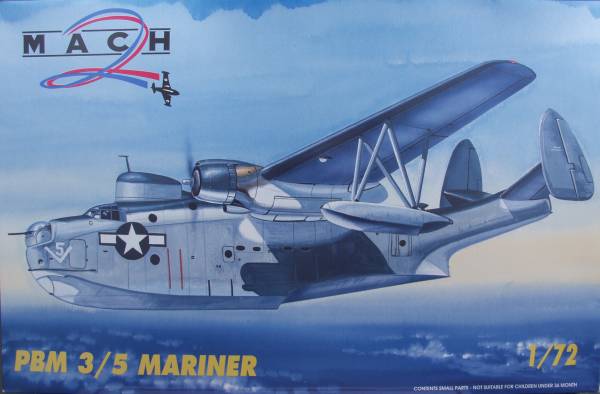
Ohhh noooo, not another Mach 2 kit ! Well, I read somewhere that this kit is one of their better kits, I'm not sure that is saying much. Unfortunately it's the only game in town at the moment although there has been a report that Minicraft has one in the works.
Lets take a look at what you get for your money. The kit is packaged in the typical Mach 2 two part box of relatively thin cardboard. The contents was in a single bag inside. There were four sprues of parts in light gray styrene and one sprue of clear parts. These are shown below...
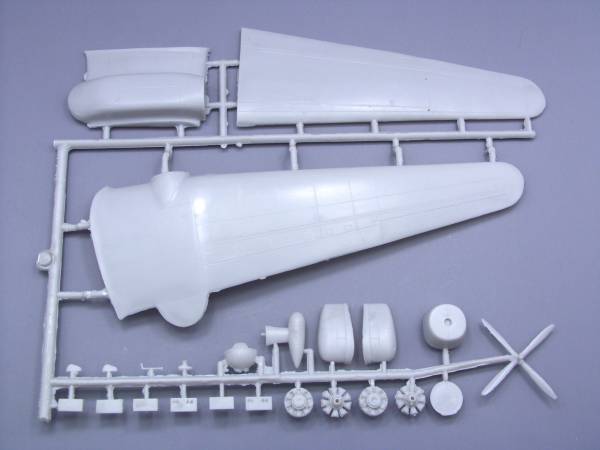
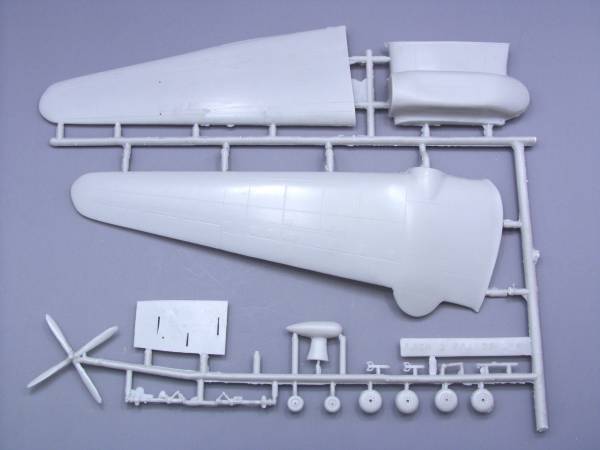
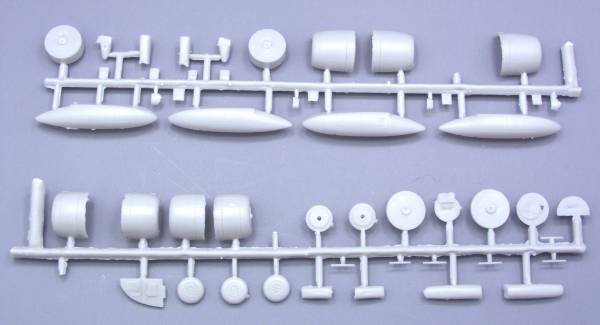
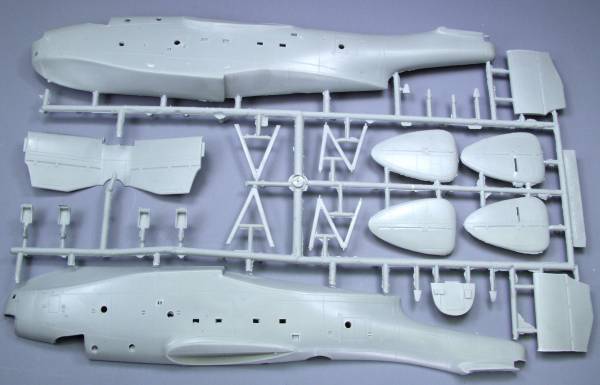
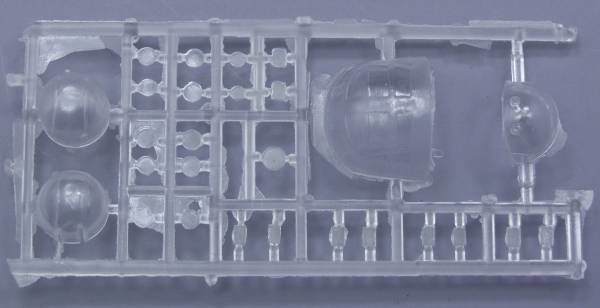
I would judge the kit to be about the same quality as the Coronado also previewed on this site. As with most Mach 2 kits there tends to be a lot of flash, especially on the smaller hard to clean parts and this kit is no exception. The panel lines are recessed and are nicely rendered and uniform and the surfaces have a rough texture also common to Mach 2 kits. There were also some sink marks and distorted areas on the outside that correspond to the ejector pin stubs on the inside. As with most limited run kits there are no alignment pins on the parts I suspect as with other Mach 2 kits there will be some fit issues. The cockpit details are minimal, consisting of a floor, rear bulkhead, seats, control columns and instrument panel. Adequate as far as I'm concerned for this scale and the clear parts are not very good and I doubt that Future will help them all that much, unfortunately there are no vacuformed replacements available so you are on your own here. The kit has extra parts which allow you to build either a -3 or -5 version, the major differences being the size and shape of the engine cowlings and type of radar housing. There are some other parts that were located differently and the best bet is to check photo's of the version you want to build as there were several variants of the -3 and -5's built. All totaled their are 110 gray parts and 27 clear parts.
The decals shown below are for two aircraft, one is a -3 from the Pacific theater from 1944 carrying the 3 tone scheme, the other is a -5 stationed in the area of Japan in 1953 in an overall blue scheme. The instructions also show a -3C, which served with the RAF but no decals are supplied. Note the colors have been shifted to allow the white portions to show up. The decals appear thin and relatively well registered but I currently have no experience with them so cannot comment on their quality or ease of use.
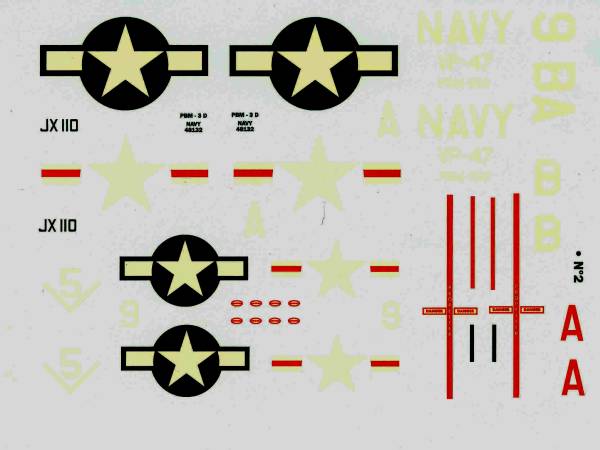
The instructions consist of a single A4 sized sheet printed on both sides. One side has diagrams showing most of the part locations and part differences between the two versions. The backside has diagrams for the markings and paint schemes, called out by color name only. See below...
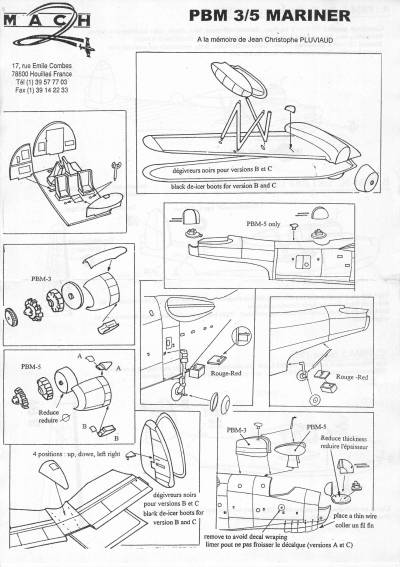
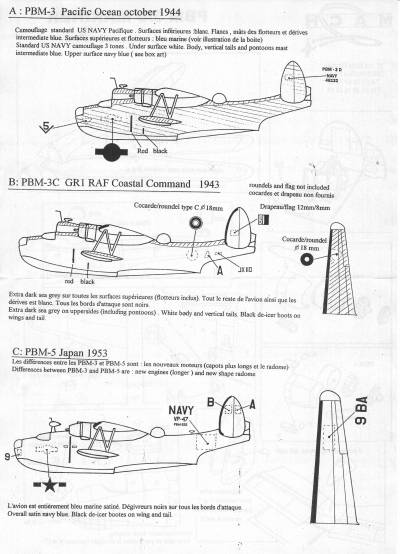
Conclusions
To date there is no after market stuff available that I'm aware of. This kit and the Coronado reviewed elsewhere are about the same quality which isn't saying all that much. They are certainly much better than the worst Mach 2 kit I own, that being the Do 26 and maybe slightly better than another I have, the Ar 232 but all Mach 2 kits will test both your patience and skills and are recommended to experienced modelers only.
Links to kit build or reviews
A kit review can be found here
References
"War Planes of the Second World War Volume 5, Flying Boats" by William Green
"PBM Mariner in Action" by Bob Smith, Squadron / Signal publications Aircraft # 74
Updated 5/10/08